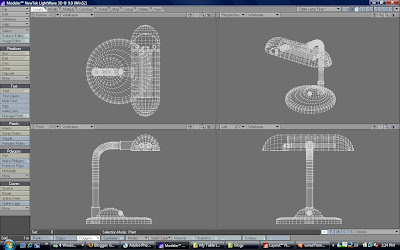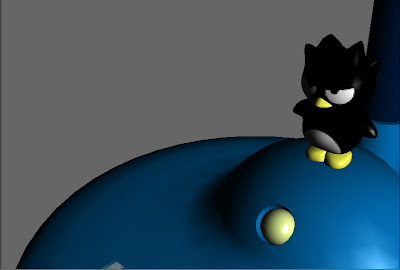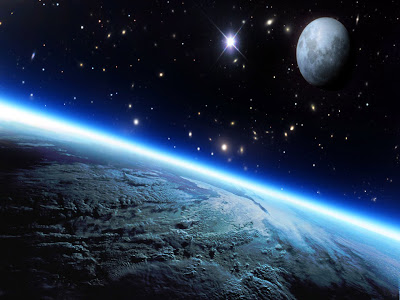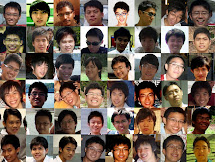 Well, have you ever wondered how Nemo is being animated, or Alex in Madagascar been created? 3D graphics had become very common and is dominating the digital world, in every aspect including film industry, engineering, gaming industry and much much more. Well for those who are interested in computer graphics, and would like to know more about the arts of 3D graphics, below are some pieces of information:
Well, have you ever wondered how Nemo is being animated, or Alex in Madagascar been created? 3D graphics had become very common and is dominating the digital world, in every aspect including film industry, engineering, gaming industry and much much more. Well for those who are interested in computer graphics, and would like to know more about the arts of 3D graphics, below are some pieces of information: How about this? It takes me 2 days!
How about this? It takes me 2 days!Creation of a 3D Graphics
All 3D graphics of an object is created via 3 fundamentals processes:
-Modeling
-Texturing
-Rendering
Modeling
3D object is made up of points, which is connected to form polygons. Groups of interconnected polygons then form the surfaces of the object. Digital 3D object is often regarded as model, and the work of creating it is known as modeling. Very complex modeling requires acquired skills which takes a long time to master.
Texturing
When a model is done, it is plain and has no texture on its surface. Therefore textures are applied through a technique known as UV mapping. Normally texture is created using other 2D software such as Adobe Photoshop.
Rendering
This is the most important process among all the others. Rendering in 3D means the process of aa (anti aliasing) and simulating the applied attribute of an object such as reflectiveness, specularity, transparency and so on into your 3D scene. Normaly a 3D scene or setup consist of 3D models, particles and light. The computer will try to simulate how the lights would be bent, reflected and bounces off surfaces thourgh ray tracing. Hence the object looks photo realistic. The output of rendering would be normally be an image or animation. A single-framed high resolution image would takes up to hours to render! And animations such as Finding Nemo consisted of millions of such frame and the rendering is done by super computers.
Notes: anti-aliased means to produce images with smooth edges without pixelated out.
Some screen shot of LightWave 3D Modeler:



Bad Badtz-Maru!
The name of this cute cartoon character which decorates my table lamp. It takes me 1 hours to model it, and another hour to texture and detailed its surfaces. Normally organic objects are harder to be created and even impossible to replicate the real object by 100%!
 Textured surfaces
Textured surfaces
 Rendered. Surfaces shine with reflections.
Rendered. Surfaces shine with reflections.
 The real Bad Badtz-Maru!!!
The real Bad Badtz-Maru!!!
All 3D graphics of an object is created via 3 fundamentals processes:
-Modeling
-Texturing
-Rendering
Modeling
3D object is made up of points, which is connected to form polygons. Groups of interconnected polygons then form the surfaces of the object. Digital 3D object is often regarded as model, and the work of creating it is known as modeling. Very complex modeling requires acquired skills which takes a long time to master.
Texturing
When a model is done, it is plain and has no texture on its surface. Therefore textures are applied through a technique known as UV mapping. Normally texture is created using other 2D software such as Adobe Photoshop.
Rendering
This is the most important process among all the others. Rendering in 3D means the process of aa (anti aliasing) and simulating the applied attribute of an object such as reflectiveness, specularity, transparency and so on into your 3D scene. Normaly a 3D scene or setup consist of 3D models, particles and light. The computer will try to simulate how the lights would be bent, reflected and bounces off surfaces thourgh ray tracing. Hence the object looks photo realistic. The output of rendering would be normally be an image or animation. A single-framed high resolution image would takes up to hours to render! And animations such as Finding Nemo consisted of millions of such frame and the rendering is done by super computers.
Notes: anti-aliased means to produce images with smooth edges without pixelated out.
Some screen shot of LightWave 3D Modeler:



Bad Badtz-Maru!
The name of this cute cartoon character which decorates my table lamp. It takes me 1 hours to model it, and another hour to texture and detailed its surfaces. Normally organic objects are harder to be created and even impossible to replicate the real object by 100%!
 Textured surfaces
Textured surfaces Rendered. Surfaces shine with reflections.
Rendered. Surfaces shine with reflections. The real Bad Badtz-Maru!!!
The real Bad Badtz-Maru!!! Can you notice the difference? The surface of the rendered lamp looks realistic, and consists of tiny bumps resembles the surface of a plastic (cant be seen).
The images below takes me only a few minutes to model out the geometrical objects but roughly 2 and a half hours to render!
The images below takes me only a few minutes to model out the geometrical objects but roughly 2 and a half hours to render!























